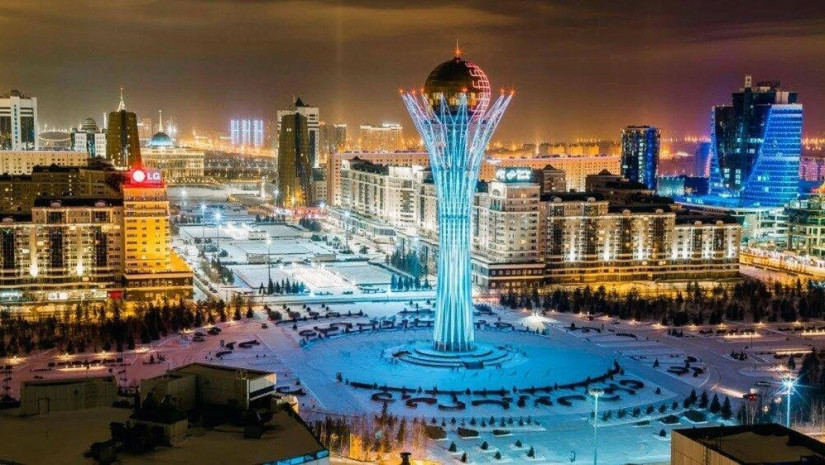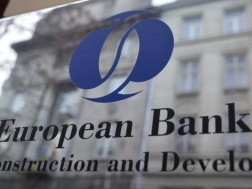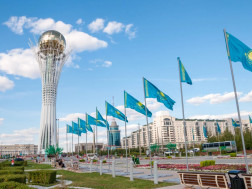Kazakhstan’s economy is forecast to grow 4.3% in 2023, up from 3.2% in 2022, driven by the normalization of oil production and expansion of the country’s giant Tengiz field, said Subir Lall, Deputy Director of the Middle East and Central Asia Department at the International Monetary Fund. Lall spoke in Astana on May 11 as he was presenting the latest Regional Economic Outlook for the Caucasus and Central Asia.
The report, which sheds light on the diverse region’s economic landscape and growth prospects, forecasts Central Asia and the Caucasus will experience a decline in collective GDP growth to 4.2% in 2023 from 4.8% in 2022 and a slight rebound to 4.5% in 2024.
The region’s economies are still reeling from a continued post-pandemic rebound and spillovers from the Russia-Ukraine conflict, including its impact on global commodity prices.
“This higher-than-expected growth reflected a smaller-than-expected contraction in Russia, which is the main trading partner for most countries in the region. In addition, [contributing factors included] significantly increased regional trade, higher oil prices for oil exporting countries, and the surge in money transfer inflows, including due to immigration from Russia in oil importing countries, but also strong wage growth in a number of countries, including Armenia, Georgia, the Kyrgyz Republic and Uzbekistan,” said Lall.
Inflation remains persistent
Inflation continued to increase across the region in 2022, with significant variation between countries. It is expected to decline in 2023 and 2024, slowing to 11.8% and 8.5% from 13% in 2022.
As of April 2023, inflation in Kazakhstan stands at 16.8%. However, for oil exporters, including Kazakhstan, the IMF projects inflation to decline slowly to 13% and 8.7% in 2023 and 2024, respectively, from 14.3% in 2022.
“In addition to global food and energy prices, inflation was partly driven by the depreciation of national currencies leading to imported inflation, strong nominal wage growth, which surpassed inflation in all Caucasus and Central Asia countries and strong credit growth, also in excess of inflation in some countries such as Kazakhstan, Azerbaijan and Uzbekistan,” said Lall.
At the event, Deputy Governor of the National Bank of Kazakhstan Akylzhan Baimagambetov spoke about the extensive fiscal support to the economy as one of the factors driving prices up.
“We see the National Oil Fund [in Kazakhstan, which accumulates the nation’s massive oil revenues] is still in so-called consumption mode. We don’t save money in the fund. We still transfer a very large amount from the fund to the state budget and the whole fiscal support also creates and supports aggregate demand in the economy and some part of this support does not produce GDP but higher prices. This is the reason for higher inflation in Kazakhstan compared to other countries in the region,” he said.
Increased policy rates
Central banks across the region have raised their policy rates in response to continued inflationary pressures. The National Bank of Kazakhstan has followed suit by increasing the base rate to 16.75% in December 2022.
“Among floating exchange rate countries, including Armenia, Georgia and Kazakhstan, since January 2021, Kazakhstan has raised its policy rate the most, by 775 basic points. The Kyrgyz Republic, with the managed exchange rate, raised its policy rate by 800 basis points, while Azerbaijan, which has a fixed exchange rate vis-a-vis U.S. dollar, raised its rate by 250 basis points,” said Lall.
The outlook is now more optimistic than it was initially projected in the IMF’s report in April 2022.
“At that time, it was unclear how deep those negative spillovers from Russia would go into the region and how that would impact remittances and other financial flows. By looking at the first few months, by the summer [of 2022], we quickly came to the conclusion that the developments ended up having a positive short-term impact on the region because the remittances actually were a lot higher than expected and part of it could be a portfolio shift of workers moving large segments of their wealth out of Russia into the region,” he said.
Key risks
Renewed commodity price pressures and supply chain disruptions can keep inflation elevated longer than expected, which, in turn, could entail additional monetary tightening and continued growth slowdown.
Other downside risks include a possible sharper-than-forecast contraction of the Russian economy, and lengthy disruptions of the Caspian Pipeline Consortium and regional supply chains.
Climate change is among the significant domestic risks highlighted by Lall.
“Changing weather patterns and more frequent weather calamities could hamper agricultural output, which is important in many economies in the region and can worsen food security, poverty, especially in low-income and fragile states,” he said.
Opportunities in a crisis
While limited fiscal space and dependence on food and energy imports will remain key vulnerabilities, Lall said opportunities also emerge.
“One key takeaway that we have from this configuration of events is that the changing trade patterns in the region are an opportunity but also a risk. Countries need to strengthen their resilience. Sanctions against Russia have led to new trade patterns and increased the region’s trade with Russia, especially for oil-importing countries. This dislocation of the traditional trade route is an opportunity for the region to diversify trade within and outside the region. On the other hand, increased trade ties with Russia exposes the region to heightened risk in case the sanctions are deepened and the Russian economy contracts more sharply,” said Lall.
In an uncertain environment, a restrictive trade policy is not a good option, said Johannes Linn, a nonresident senior fellow in the Center for Sustainable Development at the Brookings Institution.
“It is really the moment to reinforce the focus on improving regional connectivity in its various dimensions in Central Asia and the Caucasus, basically designed to create a regionally integrated economy and, of course, linking wherever possible to the rest of the world,” he said.
Improving transport infrastructure and using digital solutions in border crossing procedures are challenging for many countries.
“There is a case to be made for more investments in the Middle Corridor, which connects China with Europe through Central Asia across the Caspian Sea, Caucasus and Black Sea, Mediterranean and Western Europe. There are investments needed in improved rail infrastructure. There has already been some movement to move forward with a new rail connection from China through Kyrgyzstan and Uzbekistan. That would be helpful but it is a long-term proposition. The parts in the Black Sea and the Caspian Sea are underdeveloped or congested and need to be upgraded if the Middle Corridor is to be developed,” said Linn.
Linn sees increased interaction between the leaders in the region as a positive factor.
“We actually now have a better set of relationships among the leaderships, especially in Central Asia, than we have had in a long time and that, of course, is due to the political changes that happened over the last five or six years in Uzbekistan and I think this is the time to capitalize on improved political opportunities,” said Linn.
Experts agree that curbing inflation is the main priority. It is a priority task for the Kazakh government after President Kassym-Jomart Tokayev instructed it to halve the inflation by the end of this year.
However, monetary policy should be “cautiously calibrated,” said Lall.
“In countries where demand pressures and high inflation persist, the authorities should consider further monetary tightening as appropriate. Where inflation has peaked, central banks should carefully monitor demand pressures and consider gradual easing once disinflation trends are firmly established,” said the economist.
Lall said countries should stay vigilant and have their policy buffers rebuilt, as many were depleted following COVID-19.
“Monetary policymakers also need to be vigilant and have the space to react if a negative shock were to materialise,” he added.
In the long term, structural reforms, as well as reforms in governance, the financial sector, human capital and trade, are crucial for raising the economic well-being of the nations, Astana Times reports.
















